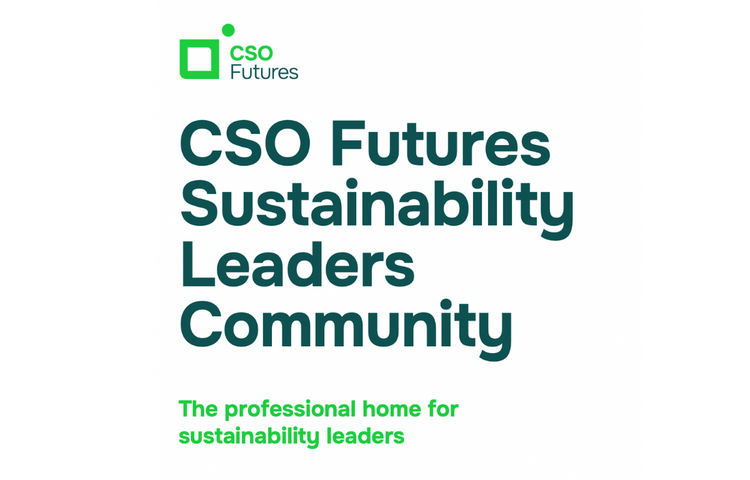Science-based targets: With great power comes great responsibility

More companies than ever are setting decarbonisation goals through the Science-Based Targets Initiative, but this increasing popularity has also focused a critical spotlight on the initiative, which has recently made some significant changes to its organisational structure. So what is the SBTi and what kind of transition is it currently going through?
A partnership between CDP, the United Nations Global Compact, World Resources Institute (WRI) and WWF, the Science-Based Targets Initiative (SBTi) was formed in 2015 to support the alignment of corporate decarbonisation ambitions with the goals of the Paris Agreement.
Companies commit to the SBTs by sending a letter to the initiative. After that, they have two years to set goals in line with the global objective of keeping the temperature rise below 1.5ºC. The SBTi has defined best practices and issued sector guidance for 14 carbon-intensive sectors, including aluminium, fashion, aviation, buildings, cement, chemicals, finance, agriculture, IT, maritime, oil and gas, power, steel and transportation.
Targets submitted within the two-year timeframe are reviewed for official validation by the SBTi team, for a “cost-recovery fee” ranging from US$1,000 US$14,500, depending on the size of the company and type of target. Once they obtain the seal of approval, companies can communicate their targets to stakeholders and begin to report against them.
This way of setting climate targets has quickly become a reference in the private sector. Eighteen months after its launch, only 26 companies had set SBTi-approved targets – as of September 2023, that number stands at 3,398.
For companies, the benefits of aligning climate plans with the SBTi range from increased credibility, to access to sustainable finance.
In September 2020, luxury fashion brand Chanel was one of the first firms to raise bonds (worth €600 million) linked to its SBTi-approved environmental targets – with the obligation to pay a premium at maturation if goals are not met. More recently, Canadian telecom company Bell announced its inaugural sustainability-linked derivatives, which can increase in cost depending on Bell's performance towards its science-based targets.
Is the SBTi: “Critically flawed”?
While SBTs have raised the bar for corporate climate ambitions, the initiative’s emergence as a de facto standard over the past few years has increased scrutiny around its governance and methodology.
In 2021, the SBTi was accused of conflicts of interest by one of its original supporters, Bill Baue. In a formal complaint to the executive board, Baue worried that the SBTi was giving a preference to the carbon calculation methodologies developed by its partners CDP WRI and WWF, while advising against approaches developed by non-partners, even when they had proved more accurate.
Last year, a group of prominent climate scientists also expressed concern about the SBTi, calling its approach to target setting and validation “critically flawed”.
In particular, they asked the initiative to increase its scrutiny of self-reported greenhouse gas (GHG) data submitted by reporting companies, or to require them to make detailed GHG inventory data public so someone else can review it. “Without such transparency, climate mitigation claims are effectively inscrutable, and not aligned with a ‘science-based’ approach,” wrote the scientists in a letter to the SBTi executive committee.
Independent analysis of the climate targets set by SBTi-approved companies also questioned their rigour. NewClimate Institute’s Corporate Climate Responsibility Monitor 2022, for instance, assessed 18 such companies and found that rating “either contentious or inaccurate, due to various subtle details and loopholes that significantly undermine the companies' plans”. The report’s authors warned: “Standard-setting initiatives face a challenging task, and potential conflict of interest, if performing the role of both defining the standard as well as assessing companies against their own criteria and guidelines.”
From initiative to standard: SBTi in transition
In response to these concerns, the SBTi has made a number of adjustments over the past few years: it changed the accepted temperature goal from 2ºC to 1.5ºC for all companies in 2021, and is currently shaking up its governance structure.
It appointed its first CEO, Luiz Amaral, in 2022, and its first Chief Impact Officer and Compliance Director both joined in Q1 2023. Additionally, the initiative has appointed an independent Technical Council to approve its standards, methodologies and guidance, as well as “provide the strong technical governance needed to maintain scientific credibility”, as stated in its latest monitoring report. It has also appointed a new board chairman, Francesco Starace, a former executive at Italian energy company Enel.
The Technical Council held its first meeting at the end of June, with minutes made public in the spirit of transparency. At the beginning of that meeting, Chief Technical Officer Alberto Carrillo Pineda made it clear that the organisation knows it is going through a transition, “from the SBTi as an initiative to a standard setter” – a transition that requires a strengthening of both governance and methodology.
In September 2023, the SBTi announced its incorporation as a charity regulated by the UK Charity Commission, effectively marking its independence from founding partners WWF, CDP, WRI, United Nations Global Compact, and We Mean Business Coalition.
It also separated its standard-setting and target validation entities, saying that by doing so it is “adopting the recognized best practice for assurance bodies, which is designed to safeguard impartiality.” Finally, it is in the process of redrawing its technical governance and standard-setting processes based on the Technical Council’s recommendations.







Member discussion